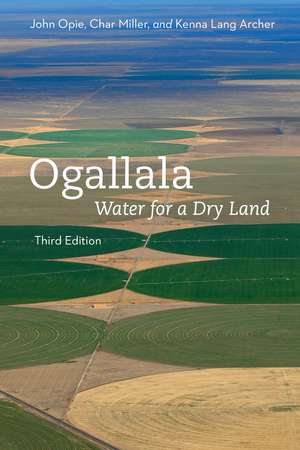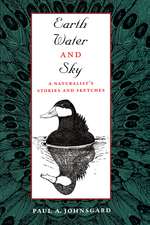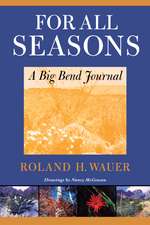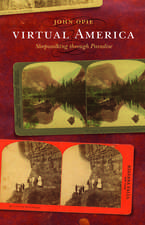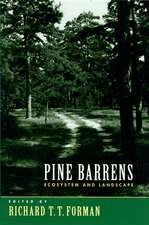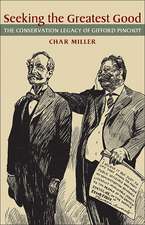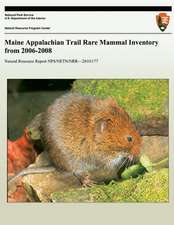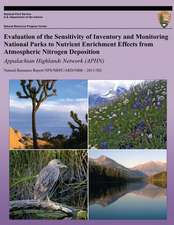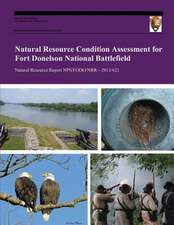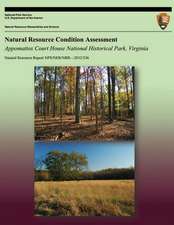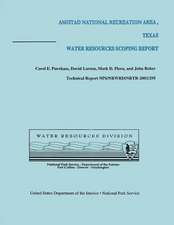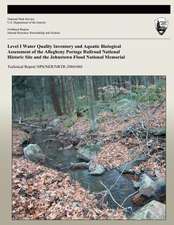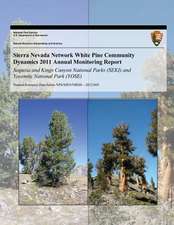Ogallala: Water for a Dry Land: Our Sustainable Future
Autor John Opie, Char Miller, Kenna Lang Archeren Limba Engleză Paperback – 31 iul 2018
2019 Choice Outstanding Academic Title
The Ogallala aquifer, a vast underground water reserve extending from South Dakota through Texas, is the product of eons of accumulated glacial melts, ancient Rocky Mountain snowmelts, and rainfall, all percolating slowly through gravel beds hundreds of feet thick.
Ogallala: Water for a Dry Land is an environmental history and historical geography that tells the story of human defiance and human commitment within the Ogallala region. It describes the Great Plains’ natural resources, the history of settlement and dryland farming, and the remarkable irrigation technologies that have industrialized farming in the region. This newly updated third edition discusses three main issues: long-term drought and its implications, the efforts of several key groundwater management districts to regulate the aquifer, and T. Boone Pickens’s failed effort to capture water from the aquifer to supply major Texas urban areas. This edition also describes the fierce independence of Texas ranchers and farmers who reject any governmental or bureaucratic intervention in their use of water, and it updates information about the impact of climate change on the aquifer and agriculture.
The Ogallala aquifer, a vast underground water reserve extending from South Dakota through Texas, is the product of eons of accumulated glacial melts, ancient Rocky Mountain snowmelts, and rainfall, all percolating slowly through gravel beds hundreds of feet thick.
Ogallala: Water for a Dry Land is an environmental history and historical geography that tells the story of human defiance and human commitment within the Ogallala region. It describes the Great Plains’ natural resources, the history of settlement and dryland farming, and the remarkable irrigation technologies that have industrialized farming in the region. This newly updated third edition discusses three main issues: long-term drought and its implications, the efforts of several key groundwater management districts to regulate the aquifer, and T. Boone Pickens’s failed effort to capture water from the aquifer to supply major Texas urban areas. This edition also describes the fierce independence of Texas ranchers and farmers who reject any governmental or bureaucratic intervention in their use of water, and it updates information about the impact of climate change on the aquifer and agriculture.
Read Char Miller's article on theconversation.com to learn more about the Ogallala Aquifer.
Din seria Our Sustainable Future
-
 Preț: 117.53 lei
Preț: 117.53 lei -
 Preț: 396.08 lei
Preț: 396.08 lei -
 Preț: 126.17 lei
Preț: 126.17 lei -
 Preț: 112.78 lei
Preț: 112.78 lei -
 Preț: 106.83 lei
Preț: 106.83 lei -
 Preț: 199.70 lei
Preț: 199.70 lei -
 Preț: 110.73 lei
Preț: 110.73 lei -
 Preț: 120.21 lei
Preț: 120.21 lei - 19%
 Preț: 364.44 lei
Preț: 364.44 lei -
 Preț: 136.91 lei
Preț: 136.91 lei -
 Preț: 259.97 lei
Preț: 259.97 lei -
 Preț: 125.37 lei
Preț: 125.37 lei -
 Preț: 193.18 lei
Preț: 193.18 lei -
 Preț: 276.53 lei
Preț: 276.53 lei -
 Preț: 216.55 lei
Preț: 216.55 lei -
 Preț: 392.66 lei
Preț: 392.66 lei -
 Preț: 280.11 lei
Preț: 280.11 lei -
 Preț: 195.26 lei
Preț: 195.26 lei -
 Preț: 246.10 lei
Preț: 246.10 lei -
 Preț: 214.08 lei
Preț: 214.08 lei -
 Preț: 222.97 lei
Preț: 222.97 lei -
 Preț: 390.58 lei
Preț: 390.58 lei -
 Preț: 290.99 lei
Preț: 290.99 lei -
 Preț: 196.55 lei
Preț: 196.55 lei
Preț: 259.16 lei
Nou
Puncte Express: 389
Preț estimativ în valută:
49.59€ • 51.78$ • 40.95£
49.59€ • 51.78$ • 40.95£
Carte tipărită la comandă
Livrare economică 15-29 aprilie
Preluare comenzi: 021 569.72.76
Specificații
ISBN-13: 9780803296978
ISBN-10: 0803296975
Pagini: 438
Ilustrații: 3 photographs, 3 illustrations, 11 maps, 1 table, index
Dimensiuni: 152 x 229 x 29 mm
Greutate: 0.63 kg
Ediția:Nouă
Editura: Nebraska
Colecția University of Nebraska Press
Seria Our Sustainable Future
Locul publicării:United States
ISBN-10: 0803296975
Pagini: 438
Ilustrații: 3 photographs, 3 illustrations, 11 maps, 1 table, index
Dimensiuni: 152 x 229 x 29 mm
Greutate: 0.63 kg
Ediția:Nouă
Editura: Nebraska
Colecția University of Nebraska Press
Seria Our Sustainable Future
Locul publicării:United States
Notă biografică
John Opie (1934–2018) was Distinguished Professor Emeritus of Environmental History and Policy at the New Jersey Institute of Technology. He is the founding editor of the journal Environmental History and the author of Nature’s Nation: An Environmental History of the United States. Char Miller is the W. M. Keck Professor of Environmental Analysis at Pomona College and author of several books, including Not So Golden State: Sustainability vs. the California Dream. Kenna Lang Archer is an instructor of history at Angelo State University in Texas. She is the author of Unruly Waters: A Social and Environmental History of the Brazos River.
Cuprins
List of Illustrations
Preface to the Third Edition
A Note on Editorial Method
Introduction: Learning to Think about the Ogallala
1. The First Half-Billion Years
2. Finding the Water: Boom and Bust, 1870–1940
3. From Dryland to Dustbowl: Not a Good Place to Farm
4. Windmills, Center Pivots, Feedlots, and Porkers
5. A Tale of Seven Water Conservation Districts
6. Making Irrigation Work for a Family Farm: Phil and Linda Tooms on the Moscow Road
7. The Future of Plains Irrigation: A New Gospel of Efficiency
8. Thinking the Unthinkable: Climate Change Hits the Vulnerable Plains
9. A Final Look
Notes
Index
Preface to the Third Edition
A Note on Editorial Method
Introduction: Learning to Think about the Ogallala
1. The First Half-Billion Years
2. Finding the Water: Boom and Bust, 1870–1940
3. From Dryland to Dustbowl: Not a Good Place to Farm
4. Windmills, Center Pivots, Feedlots, and Porkers
5. A Tale of Seven Water Conservation Districts
6. Making Irrigation Work for a Family Farm: Phil and Linda Tooms on the Moscow Road
7. The Future of Plains Irrigation: A New Gospel of Efficiency
8. Thinking the Unthinkable: Climate Change Hits the Vulnerable Plains
9. A Final Look
Notes
Index
Recenzii
“Thorough, balanced, thoughtful, and certainly thought-provoking. . . . A ‘must read.’”—Journal of Sustainable Agriculture
“Opie’s answers, marvelously multi-faceted and unbiased . . . could serve elsewhere as a sane, scholarly model for addressing local enviro-crises.”—Booklist
"This book should be read by every Plains political aspirant, policy maker, educator, landowner, farmer and rancher, and indeed every citizen."—Michael J. Smith, Nebraska History
"When John Opie first published Ogallala in 1993, it was a major contribution to the fields of environmental, agricultural, and economic histories besides that of the American West. This current revision, ably assisted by Char Miller and Kenna Lang Archer, both exceptionally accomplished environmental historians, is no less a contribution."—James E. Sherow, Environmental History
